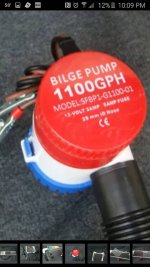mytimetoshine
Bronze Member
- Jun 23, 2013
- 1,574
- 3,372
- Detector(s) used
- GRIZZLY GOLD TRAP - ANGUS MACKIRK EXPLORER- BLUE BOWL - GOLD CUBE, MINELAB PRO 25 PINPOINTER-
- Primary Interest:
- All Treasure Hunting
So I ordered a recirculating cleanup sluice off ebay and I need help getting the battery for it. I have zero experience with these type batteries so if I could get some suggestions and links that be great.
The pump says 12v 3amp so I'm going to take a wild stab at it and say I need a 12v 3amp battery? ..found that pretty easy on amazon but the charger... not finding that.
The pump says 12v 3amp so I'm going to take a wild stab at it and say I need a 12v 3amp battery? ..found that pretty easy on amazon but the charger... not finding that.
Attachments
Upvote
0





